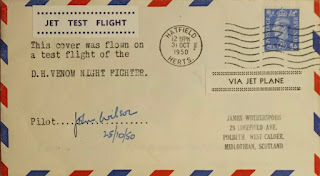Constantin 'Kostia' Rozanoff 1905-1954
 Constantin 'Kostia' Rozanoff with Mystere IV
Constantin 'Kostia' Rozanoff with Mystere IV  Constantin Rozanoff, nicknamed "Kostia", was more than an icon in the French Air Force fighter arm, he was a true aviation legend. A descendant of a noble Russian family, he was born on
Constantin Rozanoff, nicknamed "Kostia", was more than an icon in the French Air Force fighter arm, he was a true aviation legend. A descendant of a noble Russian family, he was born on
He studied engineering at the central and superior schools of aeronautics where he graduated with top honnors. Called in the military service in 1928, he completed his obligations with the 34th aviation regiment of observation at Le Bourget, and as a reserve officer at Avord. He continued his military aviation career, graduated as a pilot, and was attached to the 12th aviation regiment in Reims in 1930. Desiring to continue his career in the French Air Force, he opted for technical and administrative positions, rather than operational positions. In April 1935, he was attached to the Villacoublay flight test center and promoted to captain in June. He pursued his test pilot career until the beginning of world war two. However, in October of 1937, it almost came to an end. While testing the spin characteristics of a Hanriot, he could not recover and bailed out just in time. On November 28 1939 , he was selected to ferry a captured Bf 109, but the flight ended with another bail out and the destruction of the airplane. Desiring to take a more active part in the war, he requested to be transferred to the front, and in February of 1940 he became second in command of GC (Groupe de chasse) II/4. Staying with the "armistice" Air Force, he was assigned several positions at the command headquarters. On November 21st 1942 , he took command of GC II/5 Lafayette, re-equipped with Curtiss P-40s and saw combat in Tunisia North Africa . On July 16th 1943 he took command of GC II/3. Promoted to lieutenant colonel in December, he left for Great Britain Empire Central Flying School united States February 24th 1954 , at the controls of a Mystere IV, he was the first French pilot to break the sound barrier with a French built airplane.
It was the same airplane that ended his life tragically on the 3rd of April 1954 . After performing a brilliant demonstration of the airplane in front of a delegation of French and British personalities, Kostia decided to break the sound barrier for the first time at ground level. Unfortunately, following an electrical failure of the stabilizer motor, the control surface deflected to nose down position as the airplane was entering the initial low altitude presentation. The aircraft hit the ground and exploded in a gigantic fire ball.






















